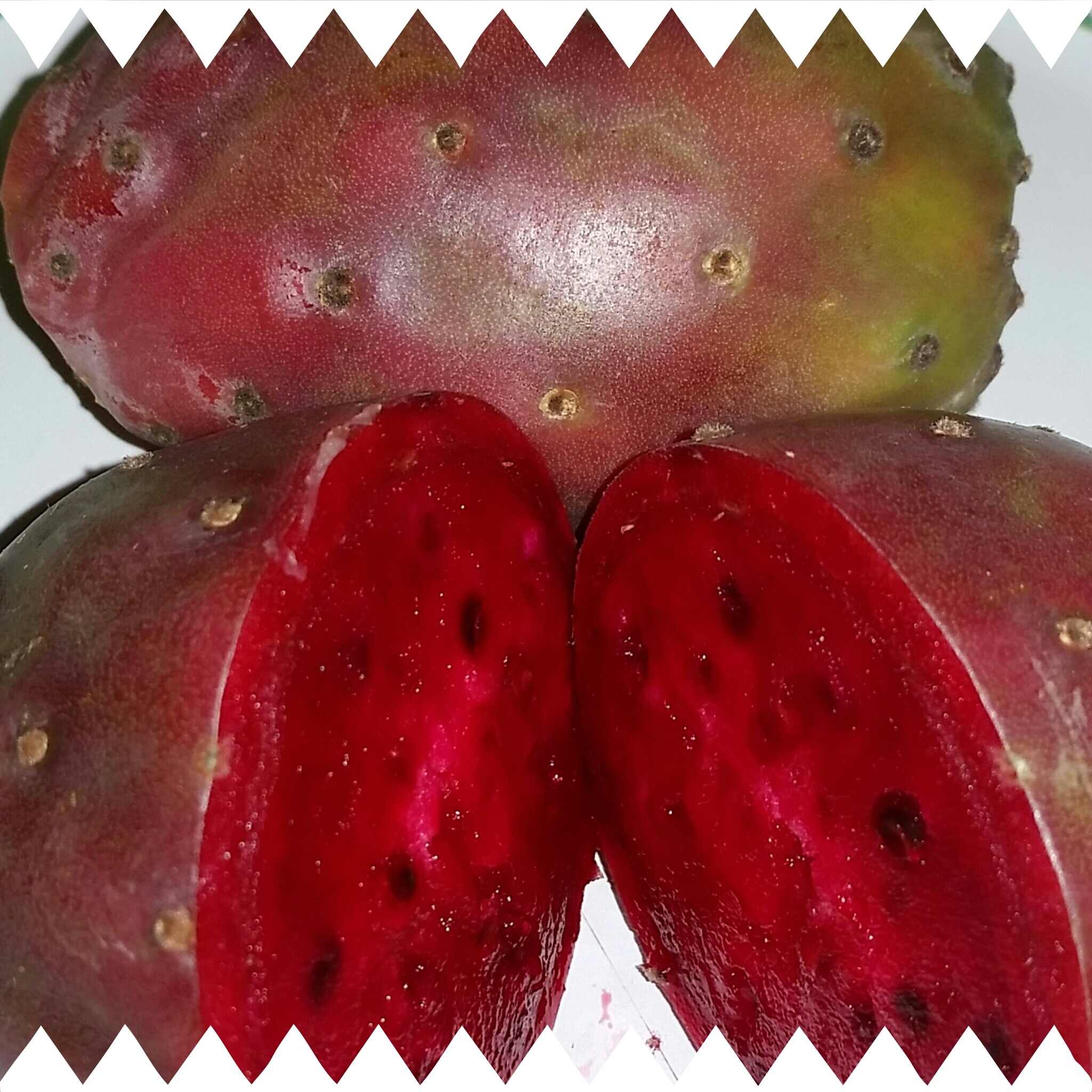
Categories
Red Nopal Cactus "Tuna" Fruit
$15.95
Whole chopped fruit, 0.5 oz
In stock
Product Details
Scientific name: Opuntia ssp.
Ingredients: 100% Cactus fruit
Forms Available: Whole dried chunks, coarsely ground powder, finely ground powder
Color: Medium to dark red
Prickly pear isn’t often thought about as a super food. That should change as word gets out about some of its amazing benefits.
Prickly pear is known by a few names such as nopal cactus, barbary fig cactus, opuntia, Indian fig prickly pear cactus, tuna cardona, westwood pear and a few others. Prickly pear as the name applies have spines, which can be long or thick in shape or short or fine in shape. Prickly pears grow in North American deserts, Southwest U.S., Mexico and in Canada. Prickly pear cactus has been part of the diet for Mexican and Central Americans for thousands of years. Most prickly pear cacti have yellow, red, or purple flowers. They vary in height from 1 to 6 feet.
The unique thing about the prickly pear plant is that it possesses two different edible sections: the pad of the cactus (nopal), which is treated as vegetable, and the pear (tuna) which is used as fruit. They grow wild in the southwest part of America, and in South America and
Canada. The ones that are commercially sold are usually from a commercial nopal farm.
The interest in the prickly plant is growing due to both the medical research and the wonderful taste of the fruit. Prickly pear has been used in Mexico to treat diabetes for over 1,000 years, and is one of the most used natural products in Central America.
The use of prickly pear as a natural helper in the treatment of diabetes is well known among native cultures. It is known to have hypoglycemic effects. The prickly pear has been reported as beneficial to a whole host of conditions. Research has shown it has beneficial actions on the cardiovascular system by decreasing platelet activity. This means it’s good for both the heart and blood vessels.
The cactus pads of the prickly pear contain essential vitamins and minerals such as: potassium, magnesium, calcium, iron, vitamin A, in the form of beta-carotene and vitamin C.
Nopal Catcus is the only plant to contain 24 of the known betalains, which are potent anti-inflammatory agents. Betalains are polyphenolic pigments found in beets. Betalains give nopal cactus their purple-red and yellow colors. Prickly pear juice power comes from its ability to fight chronic inflammation.
The pads of prickly pear fruit contain a wide range of amino acids. This includes the 8 essential amino acids, which our bodies don’t produce. This is a plant that provides more essential amino acids than most other sources.
The mucilage found inside the sticky pads of the stem contain polysaccharides which are found in immune system stimulating plants.
Diabetes
The prickly pear was shown to lower blood sugar in people having type 2 diabetes. A single dose can decrease sugar levels by 17 to 46%. An overview of clinical studies done on prickly pear and diabetes was reported by the National Institute of Health. The analysis strongly suggested that the ingestion of the nopal had a true metabolic effect on persons with diabetes and reduces serum glucose levels.
The prickly pair has a mechanism of action, which promotes a faster and better glucose entry into the cell, in diabetics as well as non-diabetics.
Since diabetes is tied to obesity, a natural way to promote both weight loss and optimal glucose control has profound significance.
In an animal study, which was published in Pyhtotherapy Research (September 2009), the researchers reported that a branded prickly pear supplement reduced the amount of weight gain in animals by nearly 20 percent, when compared to the control animals. In a French study, 49 women had a normal body mass index were randomly assigned to take either 2 grams of prickly pear extract or a placebo for 28 days. At the end of the 28 days of the double-bind study, women taking the prickly pair extract showed significant weight loss compared to the placebo group.
Obesity plays a central roll in the development of type 2 diabetes. The link between obesity and diabetes is strong. Prickly pear promotes weight loss along with glucose control. This is a powerful validation of prickly pears ability to improve insulin levels.
Save this product for later
Red Nopal Cactus "Tuna" Fruit
Display prices in:USD
